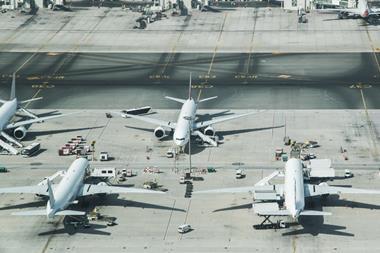Recent high-profile air turbulence events highlight broader, long-term climate risks
On May 21, a Singapore Airlines flight from London Heathrow to Singapore Changi encountered severe turbulence, causing the Boeing 777 to drop around 178 feet in just 4.6 seconds.
The flight, diverted to Thailand, resulted in 104 injuries, including the death of a 73-year-old British passenger.

Passengers were treated for a range of injuries at a Bangkok hospital, including spinal cord, head and muscle injuries.
Then, on June 22, a Korean Air flight bound for Taiwan had to turn back and make an emergency landing. Roughly 30 minutes after takeoff, the plane descended sharply, dropping about 25,000 feet in five minutes, according to FlightRadar24.
On August 8, another Korean Air flight between Seoul and Ulaanbaatar encountered turbulence that injured 14 people.
These incidents are more than anecdotal. Air turbulence is broadly defined as the meeting of air at different temperatures, pressure, or velocity.
One study showed that dangerous clear-air turbulence (CAT), which occurs in clear skies, has increased significantly. Over the North Atlantic, one of the world’s busiest flight routes, the total annual duration of severe turbulence increased by 55% from 1979 to 2020.
Why is air turbulence increasing?
“The rise in severe CAT is closely tied to climate change,” said John Wadhams, managing director of global aviation & space at WTW.
“This type of turbulence, which occurs without visual cues such as clouds, is primarily driven by wind shear in the jet stream — a rapid change in wind speed with altitude.”
“Projections suggest that the occurrence of severe CAT could triple by the year 2100 if current global warming trends persist”
“Climate change is enhancing the temperature contrast between warm and cold air masses in the upper atmosphere. This growing temperature difference leads to stronger wind shear and a less stable jet stream, making it more prone to generating turbulence,” Wadhams said.
The aforementioned study on the increase in turbulence directly said: “Our study represents the best evidence yet that CAT has increased over the past four decades, consistent with the expected effects of climate change.”
Wadhams said that as climate change continues, this trend is expected to worsen. “Projections suggest that the occurrence of severe CAT could triple by the year 2100 if current global warming trends persist,” he said. Increased flight numbers and durations also contribute to higher exposure to turbulence.
Has the increased frequency of turbulence changed how risk is assessed in the aviation industry?
“Yes,” said Wadhams. “The industry is updating turbulence prediction models with more accurate algorithms.
The International Air Transport Association (IATA) launched the ‘Turbulence Aware’ program to integrate turbulence observations directly into flight operations in real time.”
Sara Nelson, a flight attendant and president of the Association of Flight Attendants, told CNN that the aviation industry is taking the problem very seriously. “We’re the most likely to get hurt because we’re up working, pushing 300-pound carts, even when there’s some sort of warning.”
What strategies are being implemented to improve preparedness for turbulence?
Mark Prosser, a meteorologist at the University of Reading who led the CAT study, said: “Airlines need to manage the increased turbulence as it costs the industry $150 to $500 million annually in the U.S. alone.
“Every additional minute spent traveling through turbulence increases wear-and-tear on the aircraft, as well as the risk of injuries to passengers and flight attendants.”
Nelson said that the transition to sustainable fuel must be hastened to tackle the climate crisis while regulations also need to change.
Wadhams said airlines are encouraging passenger to keep the seat belts fastened during the entire flight even if the seal belt sign is off and many airlines are including new safety instructions to prevent and increase the awareness of passengers and crew of potential turbulence related injuries.
“Every additional minute spent traveling through turbulence increases wear-and-tear on the aircraft, as well as the risk of injuries to passengers and flight attendants”
“Some airlines are changing the in-flight services to protect flight attendants and passengers from burns with hot beverages while experiencing turbulence events,” added Wadhams.
One example of this is Korean Air’s August decision to stop serving cups of Shin Ramyun instant noodles (for economy-class passengers at least, the prestige classes remain unaffected).
“This decision is part of proactive safety measures in response to increased turbulence, aimed at preventing burn accidents,” Korean Air said in a statement.
While access to cup noodles may seem a trivial change in the wider risk body of air turbulence and climate change, eating Shin Ramyun on board a Korean Air flight has long been seen as a symbolic activity, one that even invokes national pride in Korean passengers.
However, such changes, both small and large, can be expected in coming years as aviation risk managers look for a smoother path through increasing climate-induced disruptions.














No comments yet